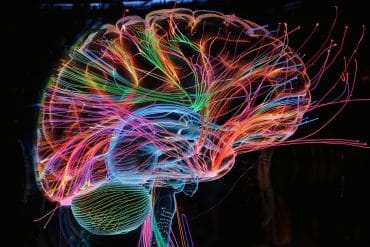Summary: Head injuries have been associated with an increase in violent offences and prolonged periods of criminal persistence in young offenders.
Source: Crime and Justice Research Alliance
Researchers have sought to identify the factors that promote or contribute to criminal persistence–that is, the likelihood that offenders will continue to offend. A new longitudinal study looked at the impact on criminal persistence of head injuries, which have been linked to increased levels of offending, among adolescents and early adults. It found that changes in individuals with head injuries were associated with increases in self-reported offending, and with violent offending in particular.
The study, by a researcher at the University of Nebraska at Omaha, appears in Justice Quarterly, a publication of the Academy of Criminal Justice Sciences.
“These results provide preliminary evidence that acquired neuropsychological deficits, and head injuries more directly, result in prolonged periods of criminal persistence,” suggests Joseph A. Schwartz, professor of criminology and criminal justice at the University of Nebraska at Omaha, who authored the study.
The study drew on data from the Pathways to Desistance study of 1,336 previously adjudicated youth who were 14 to 19 years at the start and came from Philadelphia and Phoenix. The youth, who were mostly male and from a range of races and ethnicities, were interviewed over seven years about criminal behavior and contact with the criminal justice system. Nearly a fifth sustained one or more head injuries during the study and almost a third had sustained a head injury prior to the first interview.
In his work, Schwartz explored the effect of changes in individuals with head injuries on longitudinal trajectories of arrest and monthly reports of overall, violent, and nonviolent offending. He also considered factors such as impulse control, intelligence, pre-existing dysfunction of the prefrontal cortex, family support, and socioeconomic status.
Schwartz found that head injury is five to eight times more common among individuals involved with the criminal justice system than in the general population. He also found that youth engaged in higher levels of overall and violent offending following a head injury. While Schwartz notes that it is not possible to describe the association between head injury and violent offending as causal, he points to strong evidence of significant changes in trends in offending following a head injury.
A less consistent pattern was seen in the association between head injury and nonviolent offending, indicating that head injury may affect specific forms of criminal persistence differentially. Youth who had a head injury were more likely to be arrested (or commit more nonviolent offences) than those who didn’t have such an injury, but the likelihood of arrest for those individuals who sustained an injury did not increase following an injury.

Schwartz notes that his results should be interpreted with caution because he was unable to examine directly the deficits underlying the association between head injury and criminal persistence and because the measure of head injury was self-reported and did not address the severity of the injuries.
“The impact of head injury on offending behavior is likely the result of neuropsychological deficits that compromise normative brain development,” suggests Schwartz. “We need more research into this critical issue, which would help us understand what sorts of treatment and intervention would work with people affected by head injuries and could contribute to reductions in overall crime.”
Source:
Crime and Justice Research Alliance
Media Contacts:
Caitlin Kizielewicz – Crime and Justice Research Alliance
Image Source:
The image is in the public domain.
Original Research: Open access
“A Longitudinal Assessment of Head Injuries as a Source of Acquired Neuropsychological Deficits and the Implications for Criminal Persistence”. Joseph A. Schwartz. Justice Quarterly 10, Article number 1917 (2019). doi:10.1080/07418825.2019.1599044
Abstract
A Longitudinal Assessment of Head Injuries as a Source of Acquired Neuropsychological Deficits and the Implications for Criminal Persistence
Few studies have identified factors that may promote criminal persistence. One such influence may be acquired neuropsychological deficits, or subtle changes to brain structure or functioning stemming from detrimental experiences. Head injuries represent one source of acquired neuropsychological deficits that have been linked to increased levels of offending and are differentially concentrated within justice involved populations. Making use of the Pathways to Desistance study (1,336 individuals across 84 months), this study examines the impact of head injuries on criminal persistence. The results of multilevel longitudinal models revealed that within-individual changes in head injury were associated with increases in self-reported offending, and violent offending in particular. A less consistent pattern was observed for arrest and nonviolent offending, indicating that head injury may differentially impact specific forms of criminal persistence. These results provide preliminary evidence suggesting acquired neuropsychological deficits, and head injuries more directly, result in prolonged periods of criminal persistence.






